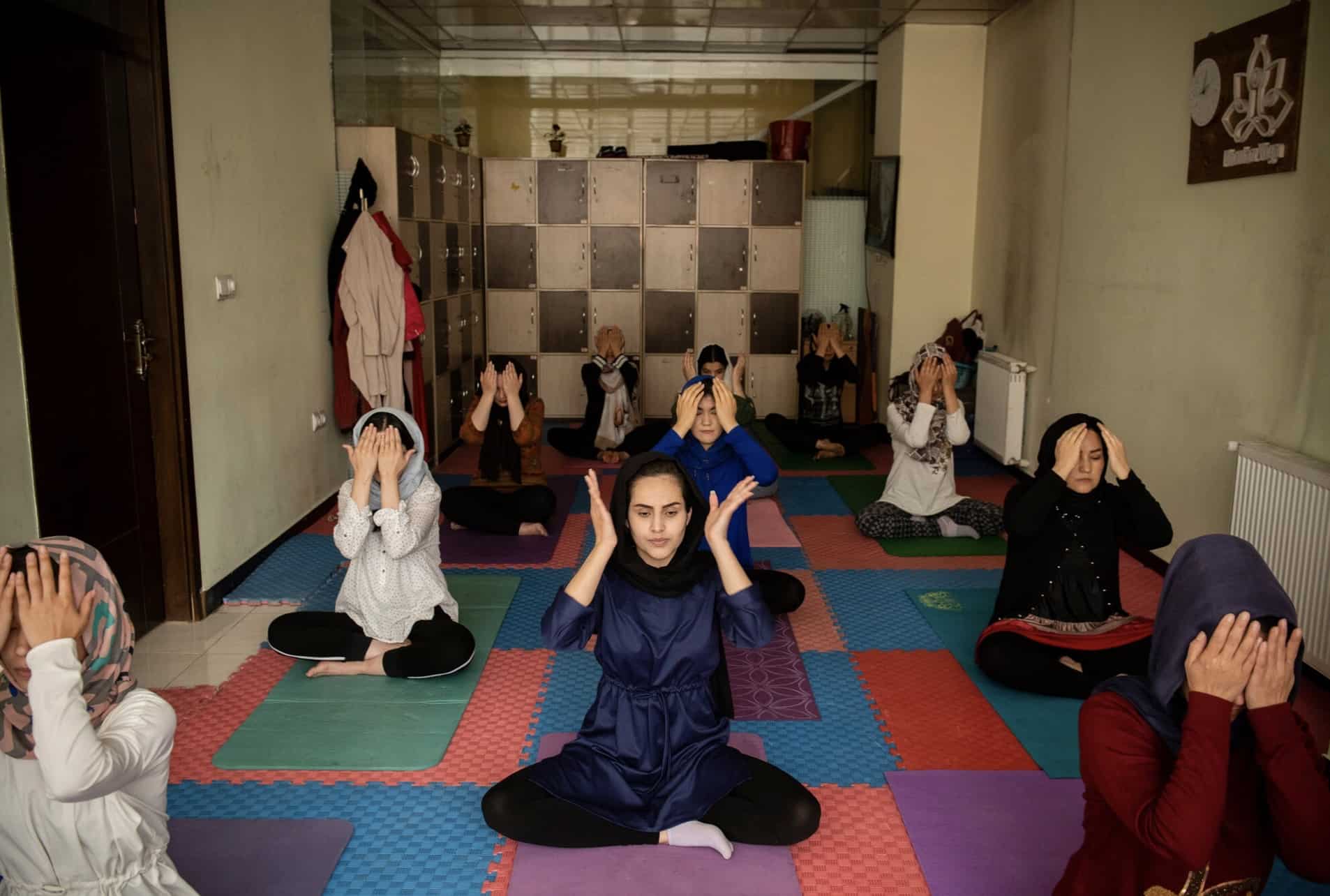What Will Happen to Women in Afghanistan Under Taliban Rule? | A Cup of Jo

[ad_1]

Yesterday, I imagine you, too, were gripped by the news, as the Taliban seized control of Kabul, the capital of Afghanistan. People fled their homes to hide, or tried desperately to escape, even clinging to the wings of departing airplanes. I hesitated to write about this huge, complicated situation, but readers have been asking for a space to talk. So, I thought I’d bring together some news pieces, especially those centering Afghan women.
Over the past few days, the New York Times’ Daily podcast communicated with R., a 33-year-old Afghan woman living in Kabul.
“My country is falling on her knees, and no one is taking any action,” she sobbed into the recorder. “The whole world is just watching.”
Growing increasingly distressed, she described the fall of Kabul: “To the world, it’s just a city that collapses, but to me, it’s not just a city… There are thousands of souls that collapse. There are millions of dreams that collapse. Our history, our culture, our art, our beauty, our lives collapse.”
Of course, as R. emphasizes, there is much to lose. Over the past 20 years — ever since the defeat of the Taliban in late 2001 — Afghan women have achieved an extraordinary amount. They’ve graduated from universities and graduate schools; successfully run for Parliament; owned bakeries, salons and stores; worked as doctors, ambassadors, journalists, bankers, ministers; the list goes on.
Now, once again under Taliban rule, what will life look like for these women and girls? In the 1990s and early 2000s, when the Taliban was previously in power, women were required to wear burqas in public. Women were not allowed to go outside without a male relative. Women were not allowed to work outside the home. Women were not allowed to attend school after the age of 8. Women were banned from voting. Some women and girls were forced into marriages. These rules essentially made women prisoners in their own homes.
“Perhaps the silence of life under the Taliban sits with me more than anything,” writes photojournalist Lynsey Addario, who has covered Afghanistan for two decades. “There were very few cars, no music, no television, no telephones, and no idle conversation on the sidewalks. The dusty streets were crowded with widows who had lost their husbands in the protracted war; banned from working, their only means of survival was to beg. People were scared, indoors and out. Those who were brave enough to venture out spoke in hushed voices, for fear of provoking a Taliban beating for anything as simple as not having a long-enough beard (for a man) or a long-enough burka (for a woman), or sometimes for nothing at all.”
Back on the Daily podcast, R. mourned Afghan women’s progress over the past 20 years. “Just forget about the sacrifices we made, the things that we worked so hard for,” she wept. “Now it’s just a matter of saving your life.”
But some cling to hope. “The Taliban is taking territory,” Afghan activist Shukriya Barakzai told Addario, “but not the hearts and minds of people.”
If you can, please join us in donating to Women for Afghan Women, a grassroots civil society organization dedicated to protecting and promoting the rights of Afghan women and girls. A reader named Hanna recommended following the reporter Stefanie Glinski on Twitter. Please share other possible ways to help and ways to learn, if you are knowledgable in this area. Thank you so much. xo
(Photo of a yoga class in Kabul on Saturday by Kiana Hayeri/The New York Times.)
[ad_2]
